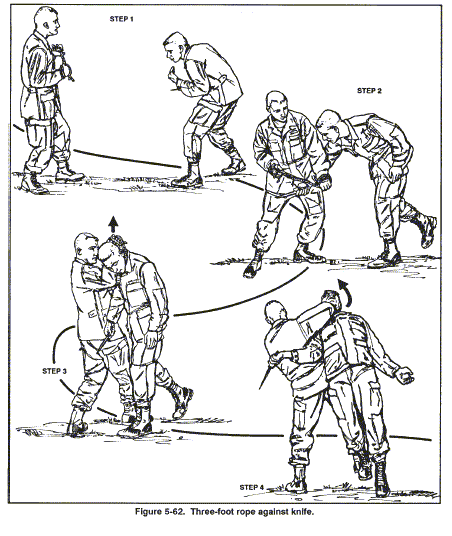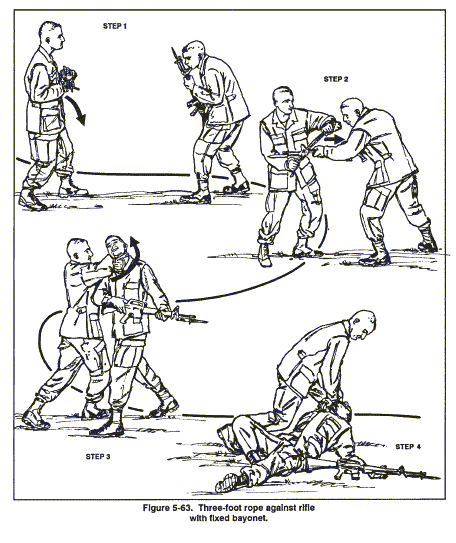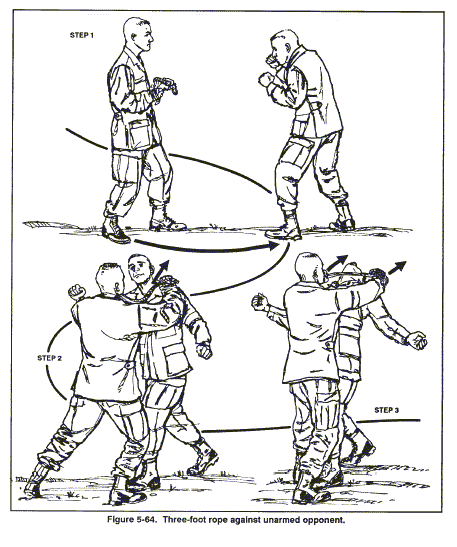
Then, he steps forward, allowing the rope to encircle the attacker’s neck (Figure 5-62, Step 3).
He continues to turn his body and sinks his weight to drop the attacker over his hip (Figure 5-62, Step 4).
| b. When the attacker thrusts with a fixed bayonet (Figure 5-63, Step 1), the defender moves off the line of attack and uses the rope to redirect the weapon (Figure 5-63, Step 2). Then, he moves forward and encircles the attacker's throat with the rope (Figure 5-63, Step 3). He continues moving to unbalance the attacker and strangles him with the rope (Figure 5-63, Step 4). | Fig 5.63 |
Fig 5.64 | c. The 3-foot rope can also be a useful tool against an unarmed opponent. The defender on the left prepares for an attack by gripping the rope between his hands (Figure 5-64, Step 1). When the opponent on the right attacks, the defender steps completely off the line of attack and raises the rope to strike the attacker’s face (Figure 5-64, Step 2). He then snaps the rope to strike the attacker either across the forehead, just under the nose, or under the chin by jerking his hands forcefully apart. The incoming momentum of the attacker against the rope will snap his head backward, will probably break his neck, or will at least knock him off his feet (Figure 5-64, Step 3). |
By the Author of the Scrapboard : | |
|---|---|
 | Attack, Avoid, Survive: Essential Principles of Self Defence Available in Handy A5 and US Trade Formats. |
 | |
 | Crash Combat Fourth Edition Epub edition Fourth Edition. |
 | |
 | |
